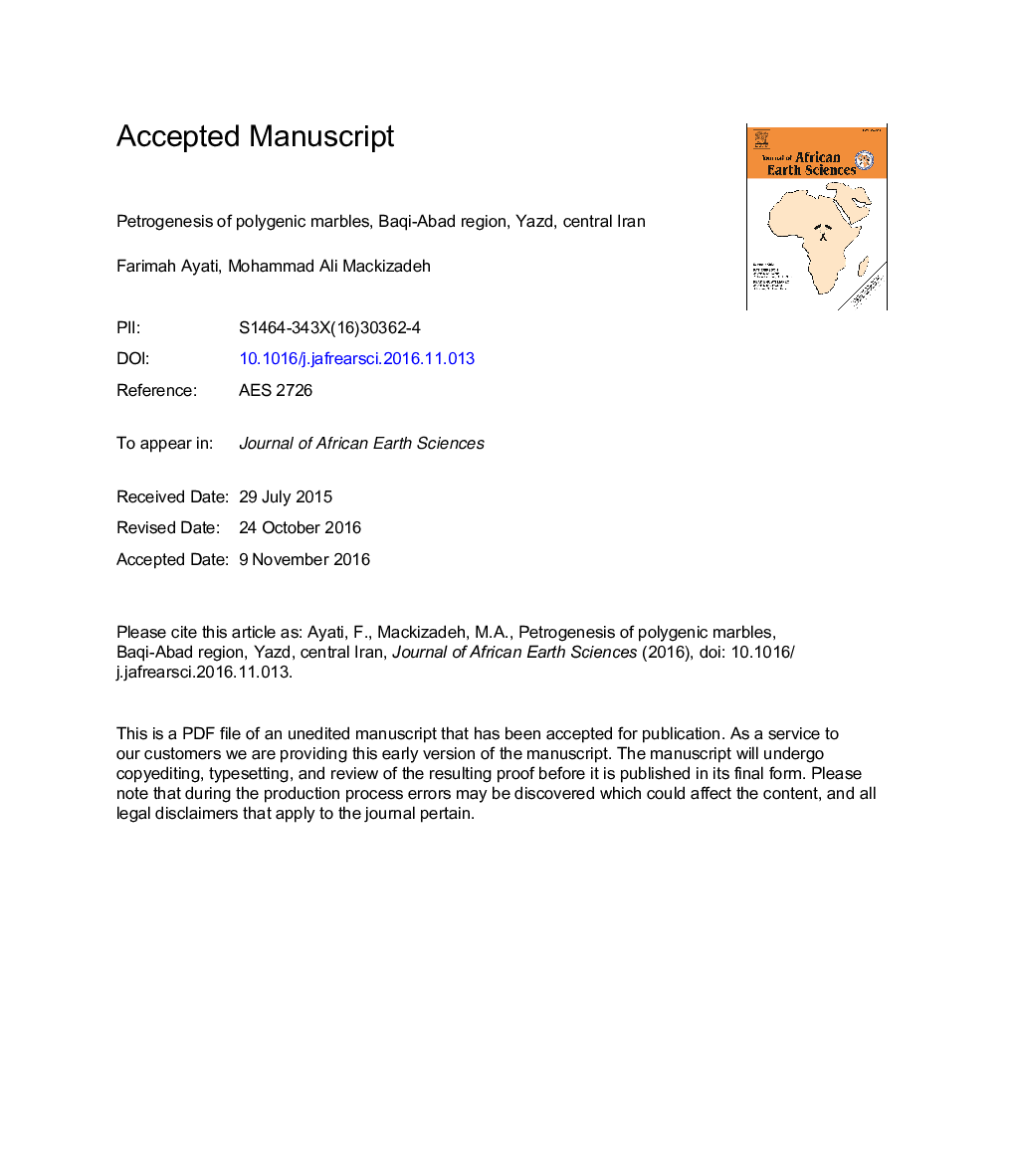| Article ID | Journal | Published Year | Pages | File Type |
|---|---|---|---|---|
| 8913780 | Journal of African Earth Sciences | 2017 | 29 Pages |
Abstract
Mineralogy, minerals paragenesis and evolution of polygenic marbles were investigated in the Baqi-Abad region (Yazd province). The area is located in the central Iran. Studied marbles are classified as calcitic marbles, brucite-bearing marbles and forsterite- serpentine bearing marbles. The following mineral assemblages have been determined: calcite + dolomite + forsterite + serpentine + talc + brucite + hydromagnesite. Based on calcite twin's geometry, marbles underwent the temperature formation between 200 and 300°C. Two mineral assemblages which have been defined in marbles are related to two stages of contact- metamorphism and metasomatism. In the first stage, de-carbonation reactions have been taken place in high fCO2 so anhydrous minerals are formed. The Second stage is characterized by invading H2O bearing fluids, leading to the formation of hydrous paragenesis. Brucite is probably formed by the de-silicification of serpentines at the first stage. On the other hand, due to the influence of hydrothermal fluids, olivines can be directly altered to brucite. It is obvious that hydromagnesite was formed at the expense of dolomite, brucite and serpentine. Its formation is associated with final carbonation reactions. As a whole, it can be concluded that based on the paragenetic relationships of minerals, there are four stages in mineral evolution system including carbonation, dehydration, de-carbonation and final dehydration processes.
Related Topics
Physical Sciences and Engineering
Earth and Planetary Sciences
Geology
Authors
Farimah Ayati, Mohammad Ali Mackizadeh,
